Char Siu (叉烧) is a unique Cantonese cuisine. However, since not everyone has a barbecue pit at home, most of us will grill it in the oven. Regardless, it’s still quite a lot of work that may make you think twice and decide to opt for takeout or dine at a Chinese restaurant.
Therefore, I will show you my homemade version of Char Siu using a nonstick pan. This recipe is easy to follow and so simple that anyone can do it.
Note: This post may contain affiliate links. Please read my privacy policy for more info. I may receive commissions for purchases made through links in this post. As an Amazon Associate, I earn from qualifying purchases.
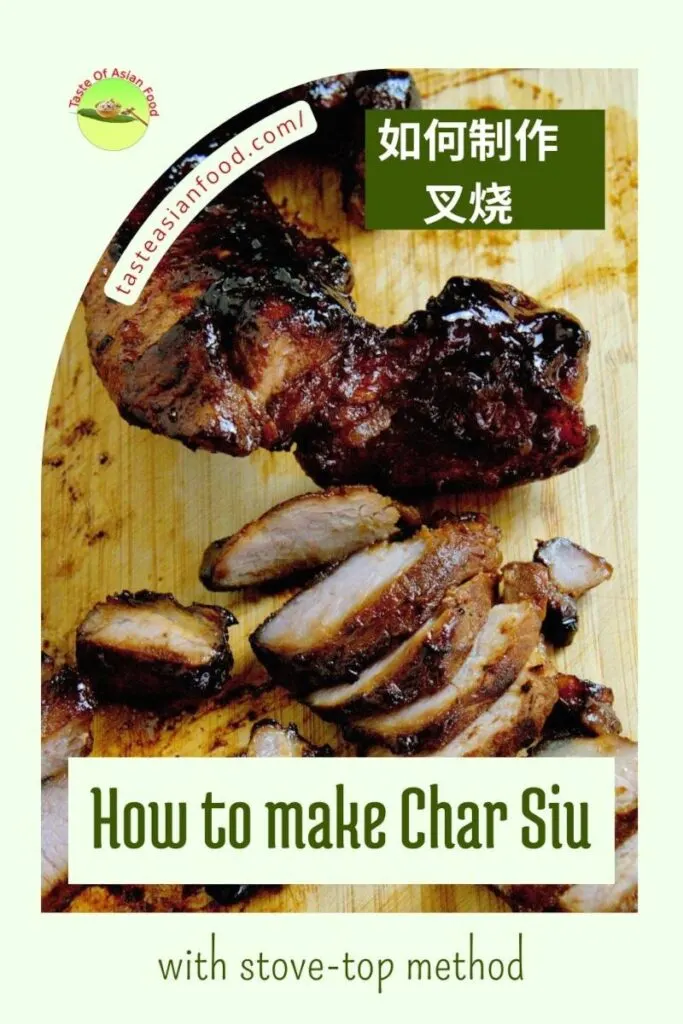
🛒Ingredients required to make Char Siu
Let’s take a look at the main ingredients to make Char Siu (Chinese barbecue pork).
- Pork. The best cut of pork for making Char Siu is pork belly (or pork shoulder), as they have a good amount of fat, which makes the meat more tender. You may also use pork butt or pork tenderloin or substitute with chicken breast, but the texture will be less tender.
- Seasoning. The seasoning consists of the commonly used Cantonese seasonings: light and dark soy sauce, oyster sauce, Hoisin sauce, Chinese five-spice powder, and honey. All these ingredients are readily available at most Asian grocery stores. You can also use maltose instead of honey, as the Chinese widely use it in preparing Char Siu. Maltose is comparatively cheaper and is widely used in Chinese restaurants.
- Fermented red bean curd 腐乳. This is a more specialized ingredient but should also be available in Chinese grocery stores. It is an alternative to red yeast rice for imparting the red color to the meat while providing additional flavor. (More about red yeast rice in the ‘Tips’ section.). However, it is optional, so you can do without it if unavailable.

How to make Char Siu at home
Here are the steps to make Char Siu
1. Cut the pork into long strips. You can use either pork belly or pork shoulder.
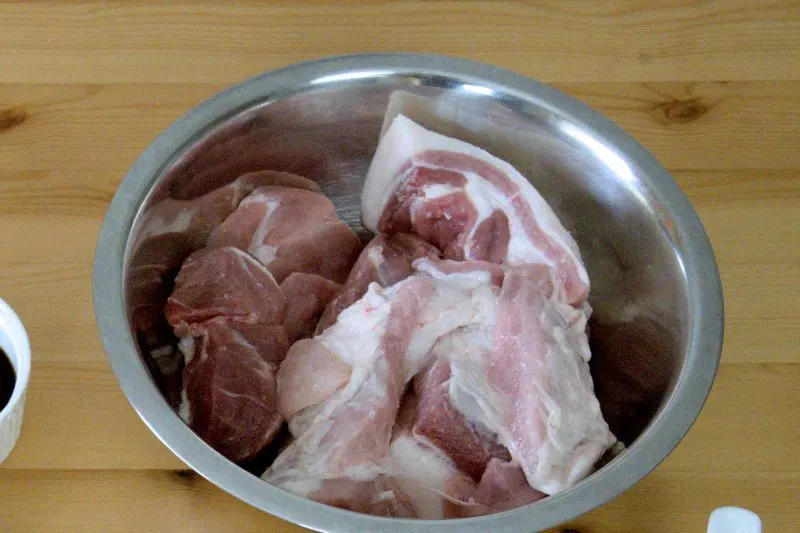
2. Prepare some chopped garlic, or use garlic powder as a substitute. Marinate the pork with five-spice powder, honey, sugar, red fermented beancurd, light soy sauce, dark soy sauce, oyster sauce, garlic, and Hoisin sauce. Mix well in a large bowl, then transfer to a ziplock bag or cover with plastic wrap. Marinate the pork for at least one to two hours, preferably overnight in the refrigerator. Turn the pork over at least once to ensure even marinating.
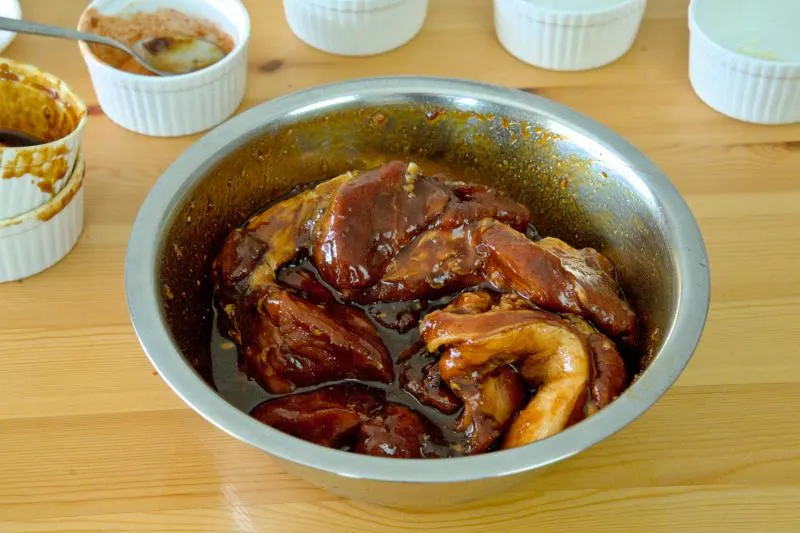
3. Remove the pork from the marinade.
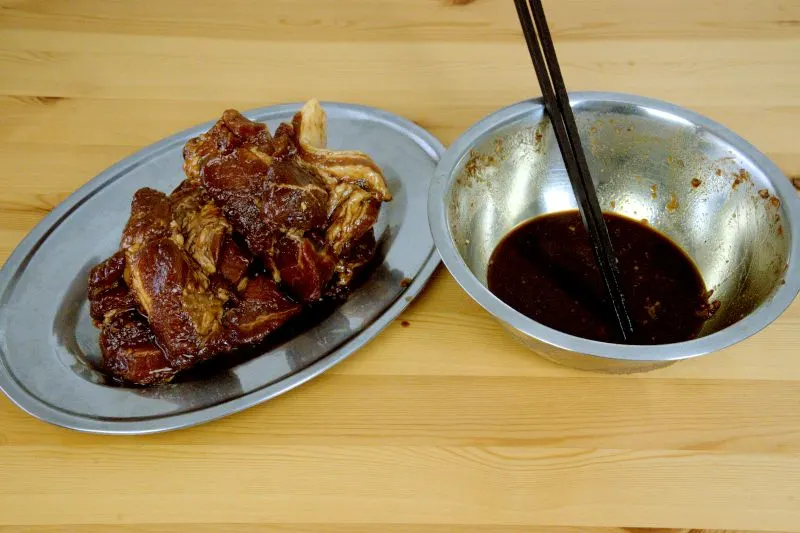
4. Heat two to three tablespoons of oil in a nonstick pan to pan-fry the Char Siu. Place the marinated pork in the pan over low to medium heat until one side turns dark brown. Move the pork around occasionally to prevent it from burning.
Flip the pork over and continue to pan-fry the other side until both sides are dark brown and nicely caramelized.

5. Add a few tablespoons of water, then put the lid on and continue to cook over low heat for one to two minutes (depending on the size of the pork strips) to ensure that the pork is fully cooked. Pork is fully cooked when the internal temperature reaches 145°F (63°C). I always use the meat thermometer to check the doneness.
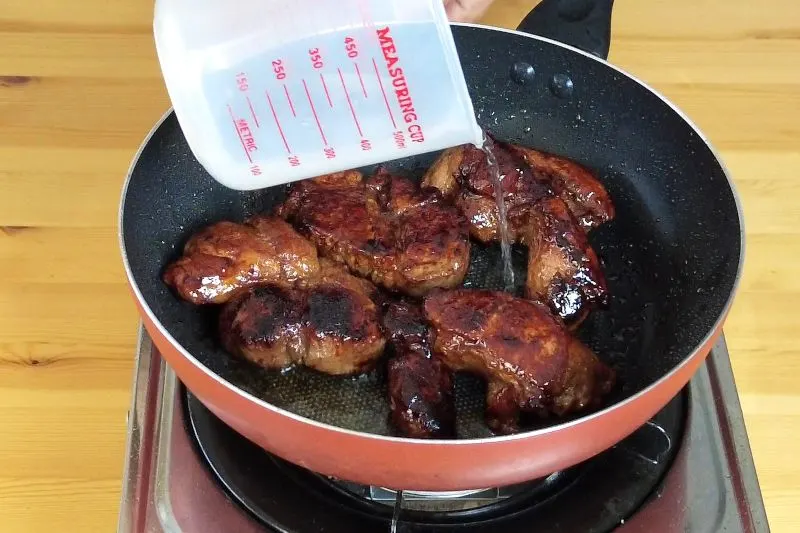
6. When the desired color is achieved, the pork should be nicely caramelized on both sides, and the gravy should be nearly dried. Remove it from the pan.
Wait until the Char Siu has returned to room temperature, then slice it into half-centimeter-thick pieces.
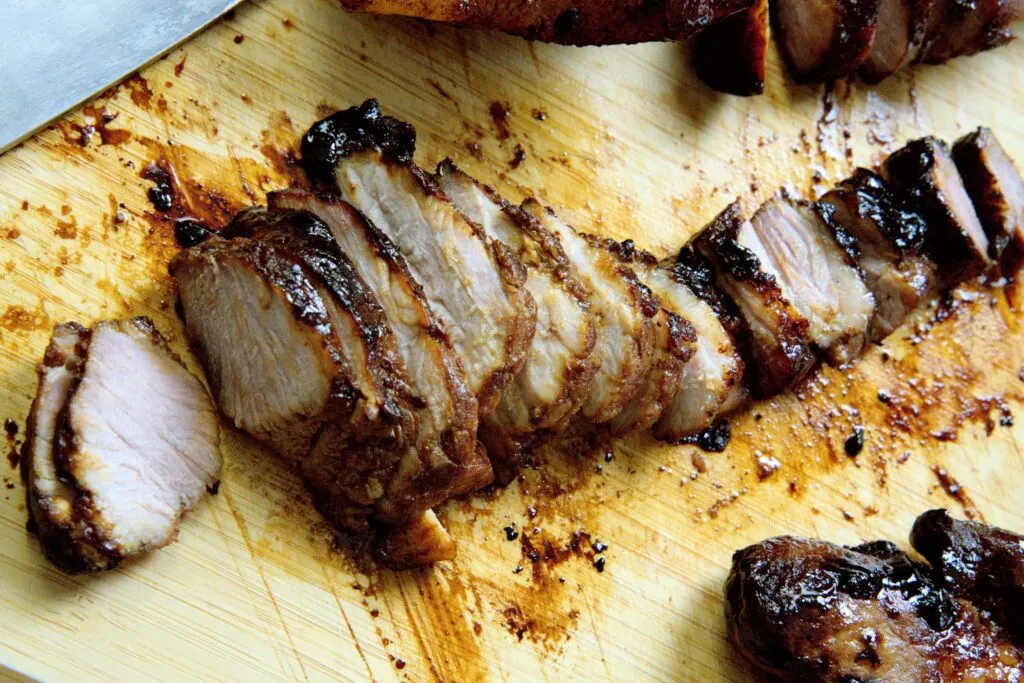
7. Pour the leftover marinade into the pan and simmer over low heat, stirring continuously, until the excess marinade reduces to a thick sauce. Then, strain the sauce through a fine strainer to remove any solids to obtain a smooth gravy.
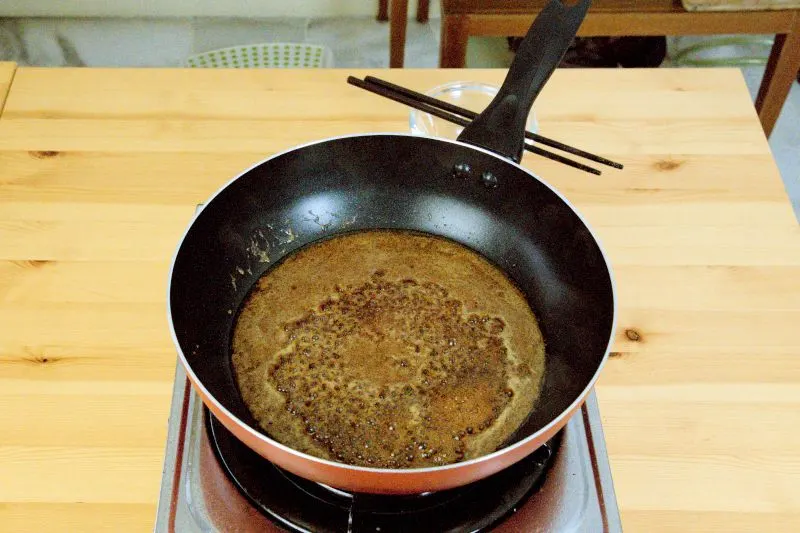
8. Drizzle the Char Siu sauce over the Char Siu to serve.
💡Tips to make the perfect stove-top char siu
The steps above outline how to prepare Char Siu at home over the stovetop. Here are a few tips to ensure you achieve the best results.
- Since the marinade contains a fair amount of sugar, be careful not to burn the pork during pan-frying, as it can caramelize quickly. Do not use high heat.
- Red yeast rice has a natural red coloring that makes Char Siu look red. It is also used to prepare Chinese roast ducks for the same reason. I did not use it in this recipe because I used the fermented red beancurd instead. (Some translated it as red fermented tofu, which means the same thing.) Char Siu’s flavor remains unchanged without using red yeast rice or fermented beancurd, although it will not turn out as red as those in Chinese restaurants. Some restaurants even use red food coloring to make the Char Siu appear reddish, but this often results in a fake-looking color and does not provide the best results.
- Please understand that the recipe contains a fair amount of sugar, and I need to highlight this, especially for anyone with diabetes. However, sugar is also an ingredient that cannot be omitted, as it is required to caramelize the pork.
- Some people find the flavor of Chinese five-spice powder too overpowering, so adding half a teaspoon at most to 1.5 pounds of meat should be sufficient.
- It is essential to marinate the pork sufficiently to let the marinade penetrate deep into the meat, not just on the surface. Also, using pork belly or pork shoulder is important, as it requires a certain amount of fat to ensure the Char Siu is tender.
- The ingredients used to make the marinade are crucial in determining the flavor of the char siu. You can definitely alter the proportions and even change the ingredients used in this recipe. I have noticed that many char siu dishes in restaurants have a higher sugar content, which I intentionally reduced in this recipe for home cooking.
- The most crucial step is not to use high heat to pan-fry the char siu. It can burn quite quickly in the presence of sugar, which can ruin the whole dish once it happens. To solve the problem, I add a little water while pan frying, which helps to reduce the temperature and prevent it from burning. I also cover it to simmer for a short while to ensure the internal part of the pork is fully cooked.
- The flavor and texture of the Char Siu produced by the pan-fry method are nearly identical to those made by an oven or grill with a BBQ pit. The only difference is that it does not have the crispy charred bits that can only be created by direct heat from the fire. After all, I made it without actually roasting it, so it will never be exactly the same as traditional Chinese barbeque pork.
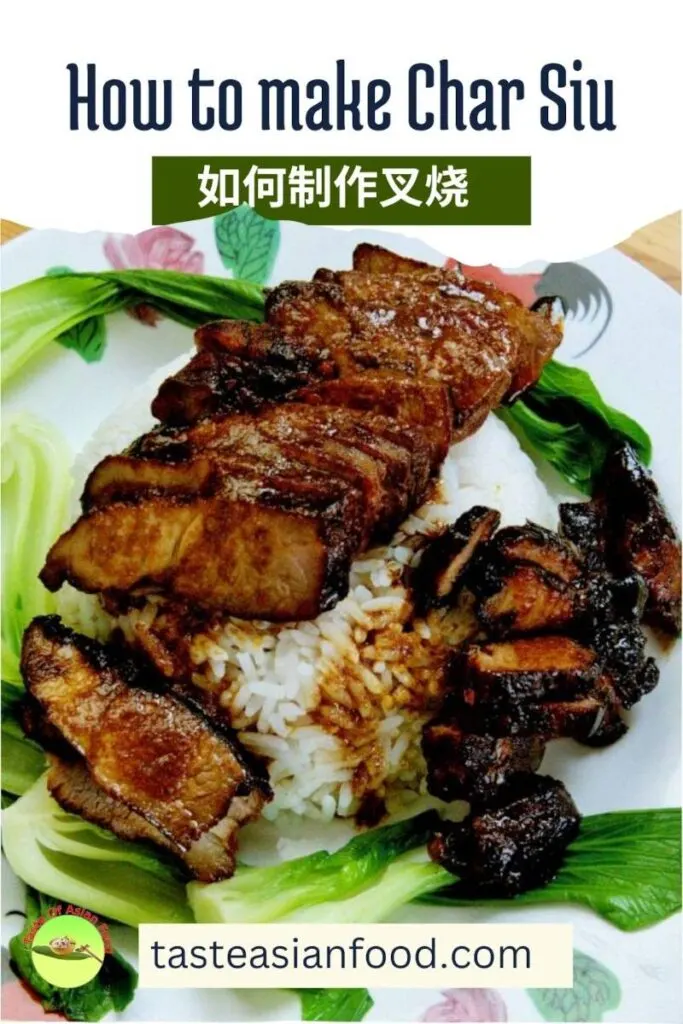
❓ What is the best way to serve?
Char Siu can be served with a wide range of items, from plain rice to noodles. Leftover Char Siu can also be used to prepare fried rice.
📖 Other related recipes to the Chinese BBQ Pork
If you like this Char Siu pork recipe, I have a few more related recipes I would like to suggest to you:
- Char Siu Bao is the most famous classic Cantonese dim sum. Find out how to make this Chinese steamed bun served in every Dim Sum restaurant.
- Chinese braised pork ribs are so tender that the meat almost falls off the bone! It is the signature cuisine of Wuxi in China.
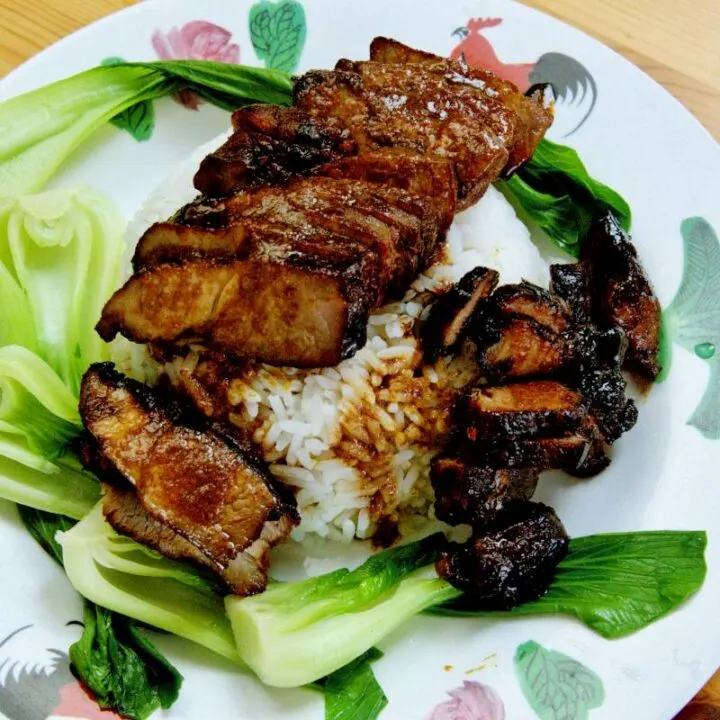
How to make Char Siu (Chinese BBQ Pork) on a stovetop
Here is an easy way to make Char Siu (Chinese BBQ pork) at home on the stovetop. It is much easier than using an oven or a grill.
Ingredients
- 700g pork shoulder or pork belly (cut into thick strips)
- 1/2 tsp five spice powder
- 4 tbsp honey
- 2 tbsp brown sugar
- 1cube red fermented beancurd
- 3 tbsp light soy sauce
- 1 tsp dark soy sauce
- 1 tbsp oyster sauce
- 2 tsp minced garlic
- 1.5 tbsp hoisin sauce
Instructions
- Cut the pork into large pieces.
- Prepare some chopped garlic, or use garlic powder as a substitute.
- Marinate the pork with all the ingredients in the recipe. Mix well and marinate for at least one to two hours, preferably overnight.
- Heat two to three tablespoons of oil in a nonstick pan to pan-fry the Char Siu.
- Place the marinated pork in the pan over low to medium heat. Move the pork around occasionally to prevent it from burning.
- Flip the pork over and continue to pan-fry the other side until both sides are dark brown and nicely caramelized.
- Put the lid on and cook for a minute to ensure the pork is fully cooked.
- When the desired color is achieved, the pork should be nicely caramelized on both sides, and the gravy should be nearly dried. Remove it from the pan.
- Wait until the Char Siu has returned to room temperature, then slice it into half-centimeter-thick pieces.
- Pour the remaining marinade into the pan and simmer over low heat, stirring continuously, until it reduces to a thick sauce. Let it pass through a fine strainer to remove any debris.
- Pour the Char Siu sauce over the Char Siu to serve.
Recommended Products
As an Amazon Associate and member of other affiliate programs, I earn from qualifying purchases.
Nutrition Information:
Yield: 4 Serving Size: 1Amount Per Serving: Calories: 642Total Fat: 39gSaturated Fat: 14gTrans Fat: 0gUnsaturated Fat: 21gCholesterol: 164mgSodium: 1238mgCarbohydrates: 27gFiber: 0gSugar: 24gProtein: 44g
This data was provided and calculated by Nutritionix on 10/12/2024


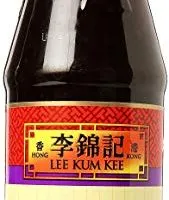
Lisa Sellars
Monday 14th of October 2024
Question: can I use pork tenderloin? Does the pork need to have fat??
KP Kwan
Thursday 17th of October 2024
Yes, you can use tenderloin. It is healthier since it has less fat, but it also means that the meat will be tougher. Another option is to substitute the pork with chicken.
Ted
Sunday 13th of October 2024
If you use pork belly, do you remove the skin? If so, what can one do with the skin?
KP Kwan
Thursday 17th of October 2024
I removed the pork skin and threw it away since there wasn't much. However, if you prefer to keep it, it can be braised with soy sauce.
Lynn
Sunday 13th of October 2024
Thank you for this recipe. It looks fantastic. We love cha siu so a quick and easy recipe is perfect. Fermented red bean curd is hard to find where I live, or should I say impossible lol. So, I just add a bit of red food colouring to the marinade. Gives the perfect red colour.
KP Kwan
Sunday 13th of October 2024
Hi, this is KP Kwan. I am happy to see you in this comment area, as you have read through my recipe. I am glad to reply to any questions and comments as soon as possible.